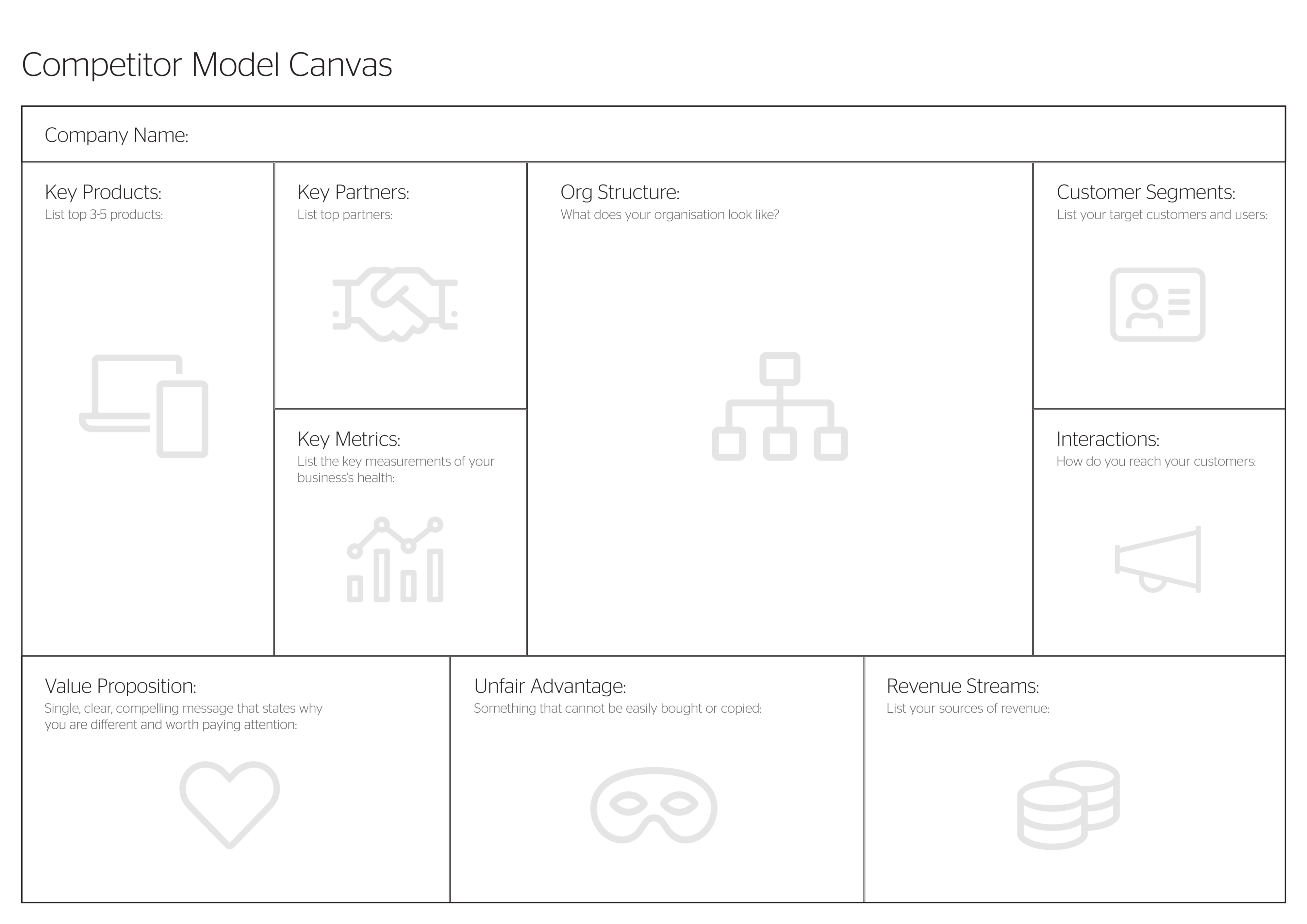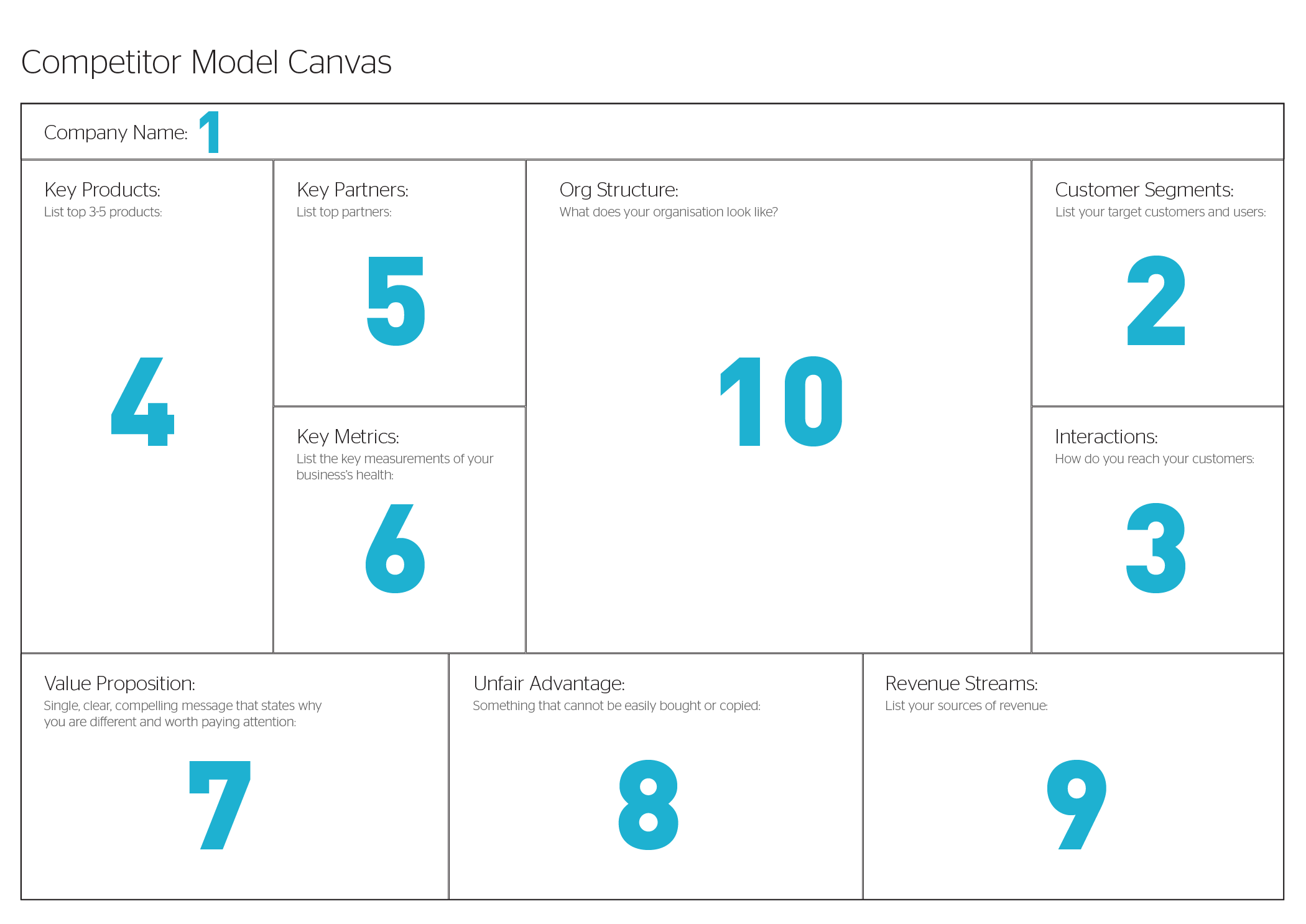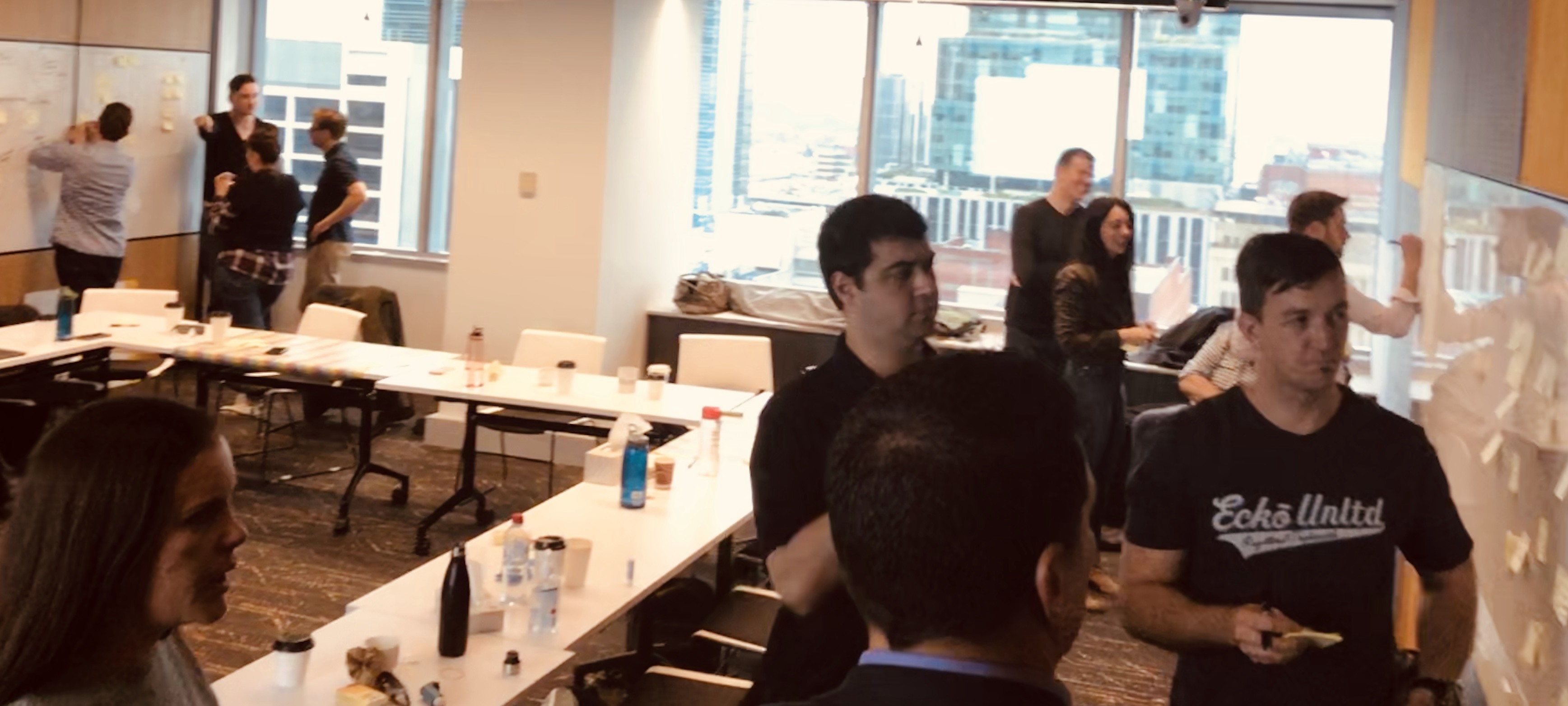Designing your own disruption
The Competitor Canvas is a stimulating activity that will challenge your leadership team by spurring disruptive thinking and innovation.
There are a few canvases that can help document or define business models:
- Initially proposed by Alexander Osterwalder, the Business Model Canvas was the first to emerge in 2008. It is a great tool if you want to visually represent your firm or product’s value proposition, infrastructure, customers, finances, and the alignment of all of the above.
- Then came the Lean Canvas introduced by Ash Maurya in 2010, focusing on startups. The Lean Canvas is intended to be refined through iterations and experiments until you get a solid model.
- If you’re working within a larger organisation and need to qualify specific opportunities, Jeff Patton’s Opportunity Canvas might be your best choice.
Introducing the Competitor Canvas
A different take on the Business Model Canvas, the Competitor Canvas is an ideation tool used with a specific workshop format to spark transformation and innovation.
The back story
While my team (at Readify) was helping an established market-leading organisation through agile transformation, I was preparing a workshop with my colleague Morgan Murray in connection with our client’s vision and strategy. In the back of our minds was the point that however well positioned in the market, businesses should expect disruption.
However well positioned in the market, you could (and most likely will) be disrupted.
We’d recently been made aware of the concept of zero-based design (ZBD), a powerful approach businesses use to reinvent their org structure from the ground up.
Then came our Aha moment.
How about combining the Business Model Canvas with ZBD?
Let’s step in the shoes of potential competitors. Let’s take a radical approach to challenging our own business with the lens of disruption.
A different angle
You could absolutely achieve that with the Business Model Canvas or the Lean Canvas, however the Competitor Model Canvas shows its full value with the right workshop format.
It helps focus on the simplicity and agility a company would need to really challenge their business. And of course, it makes you contemplate the gap between the current position and one of higher competitiveness, with less clutter and baggage.
Finally it poses the question of the optimal business structure to achieve the best outcome.

Be your own disruption
You may think how dry is this workshop going to be?
Get the business leaders in a room and ask them to indirectly (or directly) call out everything that’s wrong with their own company?
Exactly.
That’s where the fun begins.
The Competitor Canvas workshop
Say our company is called CompanyA.
• Get the right stakeholders in the room, ideally the decision makers. Aim for 8 to 15 participants.
• Split them into 3 groups. Don’t let them self organise by affinity. Try and make the teams as cross-functional as possible and avoid power clans.
Now here is the pitch:
You have resigned from CompanyA, teamed up with the best people in the field, and have secured substantial investment. You are ready to take on CompanyA.
We’re now 30 months into the future. What does your venture look like?Who are you customers, what is your value proposition, what does your company structure look like?
In 45 minutes each team will present their model to the group.
Double whammy
You probably won’t even need to point out they will be competing both with their own organisation and between themselves.
For a bit of extra fun, they will have to invent a name for their new company. A good ice breaker.
Method
Give each team a large canvas, ideally drawn on a whiteboard or a giant notepad page. Give them sticky notes and sharpies to capture their ideas.

Guide the group through filling each section in the canvas, all following the same order. Time-box it to 5–10 minutes per section.
Once the activity is complete, stand in front of the first canvas and ask one of its creators to run you through it. Allow a few minutes for questions and conversations before looking at the next canvas.
The org structure
This section would need much more than a few minutes — probably a dedicated workshop. Yet our objective here is to start a conversation and spark a different way of thinking. What is the most efficient way to provide your users with quality products and services? How would you shape an amazingly nimble and adaptive organisation?
Make it actionable
Give everyone 3 stickers and ask them to vote for the ideas they think should absolutely be considered moving forward.

Move those sticky notes on a prioritisation matrix (take a picture of the canvas first!). How about a simple 3 columns with now, soon, maybe later.
Plan for ideation sessions to develop some of your new ideas further (why not a lotus blossom workshop?).
Self-disruption
We have run the Competitor Canvas workshop with a number of our clients over the past few months, but also applied it to ourselves within Readify WA’s leadership team. It is a highly strategic tool that can bring out incredible ideas and frame a forward-thinking mindset within your organisation, all in a fun and stimulating activity.
The Competitor Canvas should help you challenge complacency, ask the hard questions, shed the light on your weaknesses and trigger innovative ideas that could be of tremendous help to your organisation moving forward.

Shout out to Morgan Murray who co-shaped this concept, workshop and article.

Comments
Comments are disabled for this post